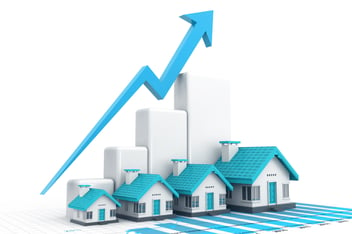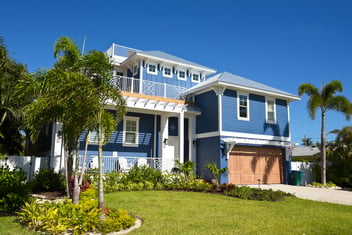The Ins and Outs of Maintaining a Rental Property
Like death and taxes, it’s a fact of life: rental properties need maintenance to last. Without regular property maintenance, small pest problems become infestations, overgrown weeds become a front yard Amazonian jungle, and leaky pipes become a multi-thousand dollar plumbing bill. Not to mention that it’s part of a landlord’s legal and ethical responsibility to keep occupied units safe and hospitable for the tenants who call them home.
Even accepting that property maintenance itself is a must, the way to go about it isn’t always so clear-cut. If your hair is on fire sorting through contractor invoices and tenant maintenance requests, this guide will help you douse those flames and make your property maintenance more proactive.
Why do regular maintenance?
Think of your investment properties like a new car. It’s shiny, it’s clean, and it drives like a dream. It might be in that state the day you drive it off the lot, but if you never took the car in for an oil change or bothered to pass through a car wash, all of those nice features—and the car’s value—would wear out pretty quickly. Rental properties function in much the same way: any work you put into them must be maintained if you want its effects to last.
Tenant happiness
Maintaining a rental property is even more important than maintaining a car, however, because other people live in your rental properties under legal contract. That means that you have moral and legal obligations to those people to keep their home safe and functional to the best of your abilities.
While your lease may stipulate that tenants are responsible for certain maintenance tasks, like snow removal or lawn care, it’s ultimately you that owns the property and you that has to foot the bill on anything more mission-critical. Taking care of your properties shows your tenants that their comfort and happiness matters to you, which can help boost your tenant retention numbers and encourage good reviews for future prospects.
Reduced Costs in Major Repairs
In addition to being the right thing to do, maintaining a rental property is also just a good business practice. By performing regular maintenance on your rental properties, you can avoid more costly repair bills further down the line. As the saying goes, an ounce of prevention is worth a pound of cure.
Regular Maintenance Checklist
It’s been established that regular rental property maintenance is a must, but what all should that entail? How do you ensure you’re doing the most you can to ensure the longevity of your investment? Here are a few key upkeep areas you should focus on to help your properties stay in good condition.
Check for leaks and water damage
Keep an eye out for unusually high water bills, signs of mold, bubbling paint, brown spots on walls or ceilings, and leaking pipes or faucets. It’s best to catch any pipe or water damage early, as mold or extensive plumbing problems will make your unit unlivable and leave you with a massive bill.
Replace air filters
If your unit has an HVAC system, it’s generally recommended to replace the filter every ninety days for optimal function. Just remember to give tenants the notice required by law before sending anyone over to replace the air filters, or include it in the lease if you expect tenants to replace air filters themselves.
Check smoke and carbon monoxide detectors
Smoke and carbon monoxide detectors save lives. Most detectors have a service life of ten years, after which it’s time to replace them. In the meantime, smoke and carbon monoxide detectors should be tested monthly by tenants and repaired or replaced by landlords in the event of a problem.
Inspect water heaters and HVAC pipes
Annual water tank inspections can stretch the life of a hot water heater by years, so it’s a good idea to schedule time with tenants for hot water heaters and HVAC pipes to undergo yearly inspection. If you skip this step, you run the risk of a sky-high repair bill or even needing to replace the systems altogether.
Check garbage disposals
While the unit is occupied, communicate to tenants that they’re responsible for cleaning out the garbage disposal and alerting the property manager or landlord of any issues. In between tenants or during annual maintenance, it’s a good idea to run a small amount of degreaser through the disposal to remove any stuck oil or fat.
Tighten any knobs, door handles, faucets, etc
The devil is in the details—whenever you’re preparing the unit for occupancy or performing a routine maintenance visit, make a habit of tightening any door hardware. This can help avoid accidents and damage to property later on.
Inspect fire extinguishers
Fire extinguishers should be free from corrosion, rust, or leakage. You can also pick up the fire extinguisher to test whether or not it’s still full. If the extinguisher is defective in any way, go ahead and have it replaced.
Visually check drywall
Drywall patch jobs are usually an easy fix, but they’re still a box that needs to be checked before any new tenants move into a unit. After residents move out or before new ones move in, give the walls a once over and make a note to patch any holes or other imperfections.
Clean out gutters
Gutters can be a line of defense against mold, mildew, and water damage, but only if you take care of them. Make a point to clean leaves and other debris out of the gutters about twice a year and respond to any tenant maintenance requests involving the gutters promptly.
Maintain landscaping, including trimming trees, raking leaves, cutting grass
High grass and unraked leaves can invite a pest problem, while overgrown trees might interfere with neighboring properties or even powerlines. Keep an eye on your property’s landscaping concerns and hire a contractor if necessary.
Check for any pest damage
Droppings, mud tubes, chewed up plastic containers, and unexplained physical damage to your property can all be signs of pests that need to be dealt with immediately. If you see any signs, ask a qualified exterminator for a consultation to determine if there’s a problem. It’s also wise to include a section in your lease asking tenants to promptly report any pest sightings.
Inspect for any electrical damage
Left unchecked, electrical issues could lead to a fire, property damage, and even loss of life. If you or your tenants notice flickering lights, hot outlets, or frequently tripped breakers, hire an electrician to look at the problem as soon as possible.
When should you inspect your property?
Move-in Inspection
It’s wise to conduct an inspection before new tenants move in, and to complete a walkthrough with them so that any existing damages are thoroughly documented. This will make it easier to damage who’s liable if any damages are discovered when the tenant moves out.
Drive-by Inspection
Once a month or so, it’s a good practice to drive by your rental units and check on the outside. If you notice anything out of place, such as overgrown grass or tenant activities that could cause property damage, it’s a good idea to contact your tenants and remind them of the leasing agreement terms.
Regular Inspection
Regular inspections can happen either quarterly or bi-annually according to the landlord or property manager’s preference. These inspections will give you a chance to dot Ts and cross Is on anything that requires regular check-ins, such as air filters, pipes, and electrical.
Move-out Inspection
Conducting a prompt inspection is important when tenants move out because you need to be able to assess what damage, if any, is their responsibility. You can’t keep a security deposit for wear and tear or other routine maintenance, but if tenants leave holes in your drywall or cause other damage, you don’t have to foot the bill. Just remember to keep your receipts and provide required documentation to former tenants if you keep any of their deposits.
Seasonal Inspection (fall and winter, spring and summer)
Different seasons bring along different challenges, so if your properties are in a location with seasonal changes including weather challenges, it’s a good idea to pencil in some time to winterize your units or ensure they’re ready for high summer temperatures.
How much should I budget for maintenance expenses?
There are a few different ways to ensure you’ll have enough set aside for any maintenance related expenses.
1% Rule
One rule of thumb is to set aside 1% of your property’s total valuation for annual maintenance expenses. So, for instance, if you own a rental house worth $200,000, you would set aside at least $2,000 a year to keep ahead of routine maintenance.
50% Rule
Sometimes, despite our best efforts, things still break and need fixing. If you’re expecting some large repair bills in your near future, start squirreling away about half of your rental income to put towards these expenses.
Square Footage Rule
If percentages aren’t your preferred route, you can also use the square footage rule. For every square foot, save $1 to spend on annual maintenance. So, for a 1,000 square foot unit, you’d save $1,000 each year to put towards maintaining the unit.
There’s also the question of how you handle maintenance. Traditionally, the only real options were to be a DIY landlord or to hire a full-time property manager. Now, however, you can also hire services like Flcrm’s maintenance coordination to handle repairs and tenant maintenance calls without giving up control over other parts of the property management process you’d prefer to handle yourself. You don’t have much choice in whether or not to perform maintenance, but you do have a choice in how and when it happens, and whether you pay for small repairs now or big repairs later.



